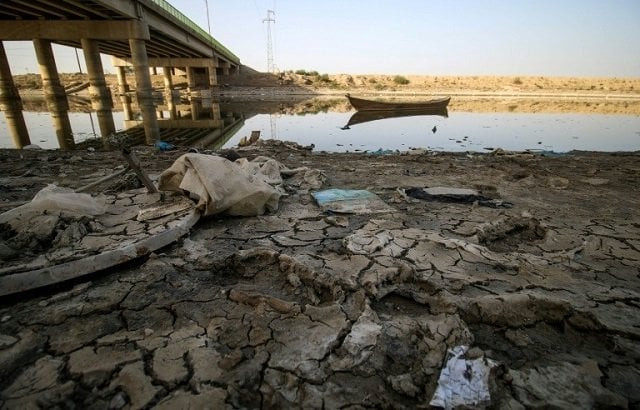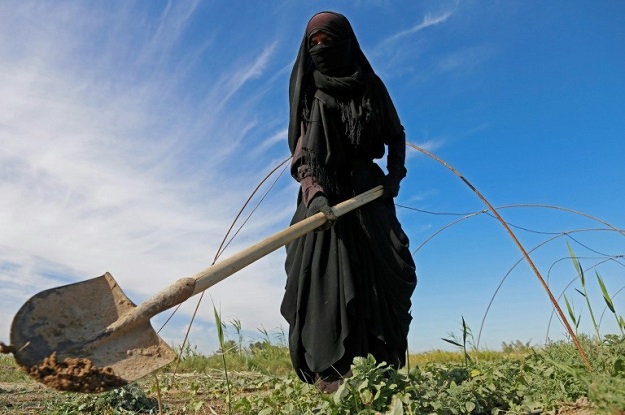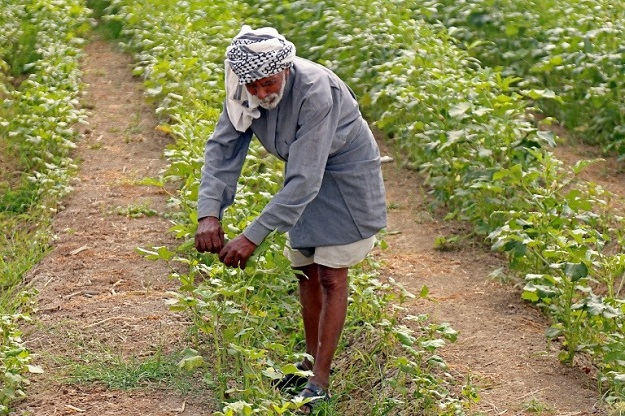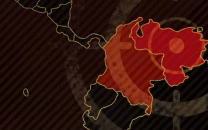In southern Iraq, drought tightens its grip
the country's reservoirs currently hold about 12 per cent of their total collective capacity

A picture taken on March 20, 2018 shows a view of the dried-up shore of an irrigation canal near the village of Sayyed Dakhil, south of Baghdad. PHOTO: AFP
Iraq women with alleged links to Islamic State sexually abused: Amnesty
"Last year, the river started to dry up and today we only have wells to supply us with water," the 73-year-old farmer told AFP.
Since childhood, Abu Ali and his family have lived off this land in the village of Sayyed Dakhil, to the east of Nasariyah city some 300 kilometres (180 miles) south of Baghdad.
It cost him $1,600 (1,290 euros) to dig the well, a lifeline that provides access to the water table deep below. "The water that we draw serves as drinking water for our cows and our sheep, and despite the bitter taste, we also use it to cook and even drink ourselves," said Abu Ali, dressed in a traditional beige robe.
 A boy watches as 73-year-old Iraqi farmer Abu Ali uses a shovel to dig in a stream of water in the village of Sayyed Dakhil, to the east of Nasariyah city some 300 kilometres (180 miles) south of Baghdad, on March 20, 2018. PHOTO: AFP
A boy watches as 73-year-old Iraqi farmer Abu Ali uses a shovel to dig in a stream of water in the village of Sayyed Dakhil, to the east of Nasariyah city some 300 kilometres (180 miles) south of Baghdad, on March 20, 2018. PHOTO: AFPBut his family's main supply of drinking water comes from six small reservoirs that are refilled at least once a week for around 20,000 dinars ($17 or 13.50 euros). Abu Ali is determined to stay put, but the drought has already forced dozens of families to flee more than 20 villages in the area.
Weather patterns are largely to blame for the crisis, according to an engineer with Iraq's ministry of water resources. "For the second consecutive season, the rains have been poor and temperatures have risen," Mehdi Rashid told AFP.
 A female Iraqi farmer digs with a shovel in a field in Diwaniyah, around 160 kilometres (100 miles) south of the capital Baghdad, on April 2, 2018. PHOTO: AFP
A female Iraqi farmer digs with a shovel in a field in Diwaniyah, around 160 kilometres (100 miles) south of the capital Baghdad, on April 2, 2018. PHOTO: AFPBut while rain accounts for 30 per cent of Iraq's water resources, the remaining 70 per cent is drawn from rivers and marshes shared with Iran, Turkey and Syria, he said. The diversion of these shared waterways has played a part in Iraq's drought.
Years after his hanging, Saddam Hussein mystery lives on
"Iran has completely re-routed the course of the Karun river," he said, once a cross-border river and a key water source for Iraqis. Rashid said Iran had also "built three big dams on the Karaj river," significantly reducing water levels in cross-border wetlands shared by the two countries. “Of the 45 tributaries once shared by Iran and Iraq, only three or four remain viable,” he added.
The famous marshes of Mesopotamia, among the largest in the region, are victims of the "worst drought in their history," according to Jomaa al-Daraji. He works with an organisation trying to protect the UNESCO world heritage site, which stretches from Basra into Dhi Qar province.
Meanwhile, Iraq and Turkey are locked in talks over the latter's controversial Ilisu dam project on the Tigris, which began in 2006. The Iraqi stretch of the Tigris is downstream from Turkey, leaving it vulnerable to reduced flows.
Along with the mighty Euphrates, the enduring presence of the Tigris river helped give Iraq its nickname: "the land of two rivers."
 Iraqi farmers have traditionally lived off their land with no need for wells, but a creeping drought is now threatening the livelihoods of nearly a quarter of the country's population in the provinces of Diwaniyah, Muthanna and Missan. PHOTO: AFP
Iraqi farmers have traditionally lived off their land with no need for wells, but a creeping drought is now threatening the livelihoods of nearly a quarter of the country's population in the provinces of Diwaniyah, Muthanna and Missan. PHOTO: AFPWith water increasingly scarce, Iraq's three major dams and 20 smaller ones are running low. According to Rashid, the government engineer, the country's reservoirs currently hold about 12 per cent of their total collective capacity.
Will Iraq be next to abolish controversial 'marry your rapist' law?
The southern agricultural provinces of Diwaniyah, Muthanna and Missan, home to nearly a quarter of Iraq's population, are also suffering from the drought. Some 80 per cent of the province's agriculture depends on generators and pumps to draw water, according to Ismail Abdel Wahed, head of water resources with Diwaniyah's provincial council.
And with warming temperatures, less rain and progressively dryer riverbeds, "the struggle is increasing each year," added his colleague Safa al-Janabi.


















COMMENTS
Comments are moderated and generally will be posted if they are on-topic and not abusive.
For more information, please see our Comments FAQ